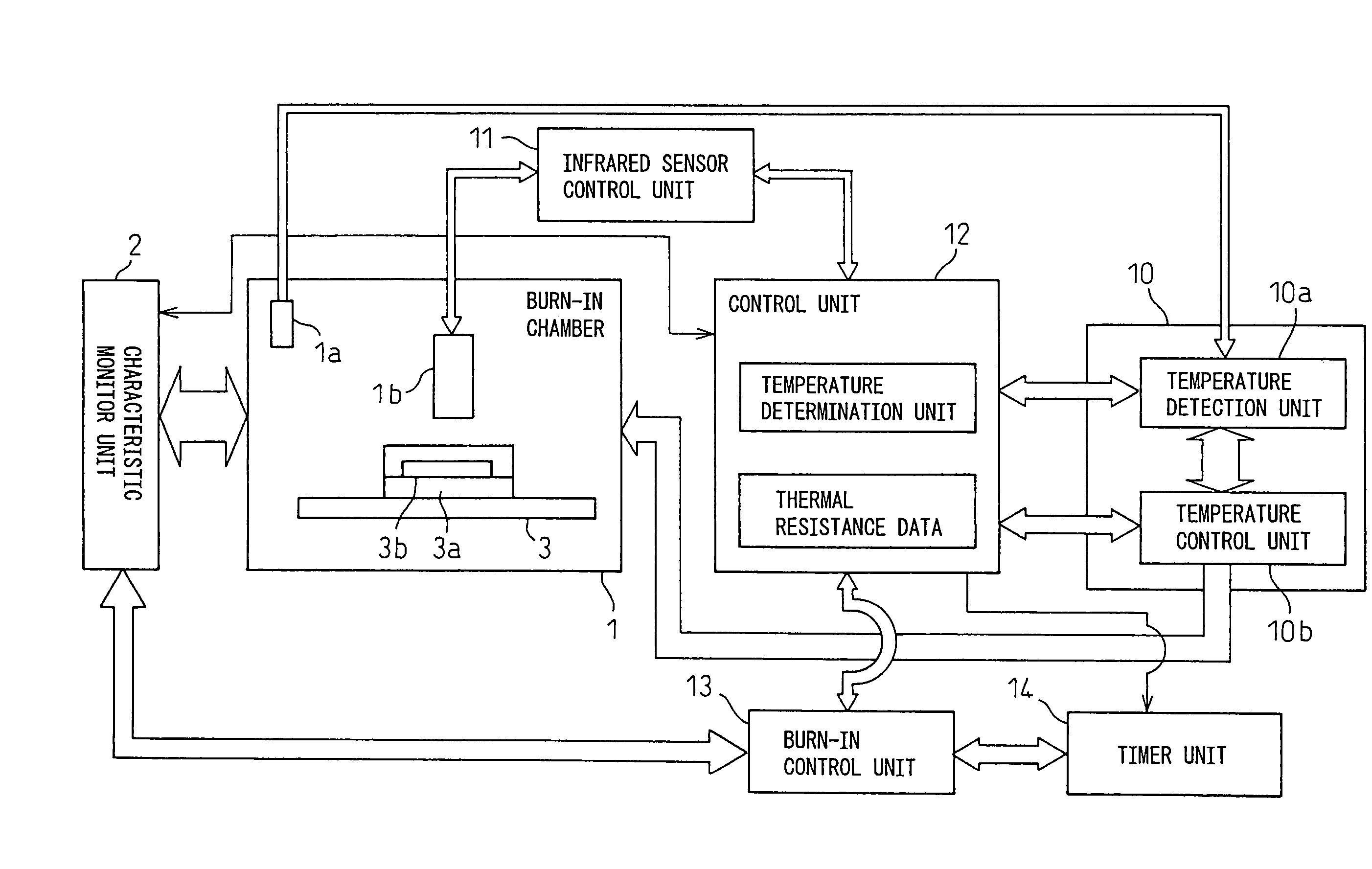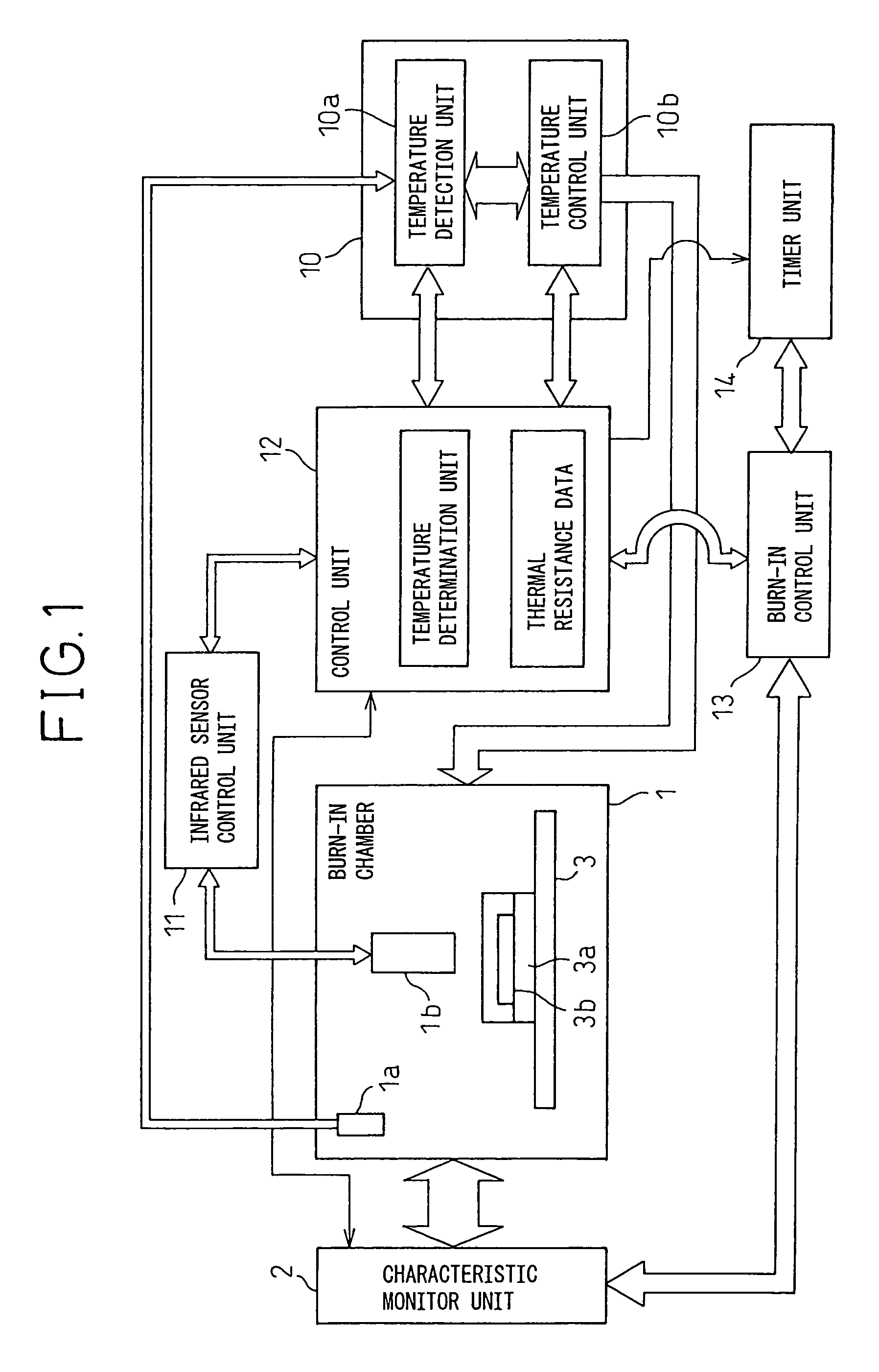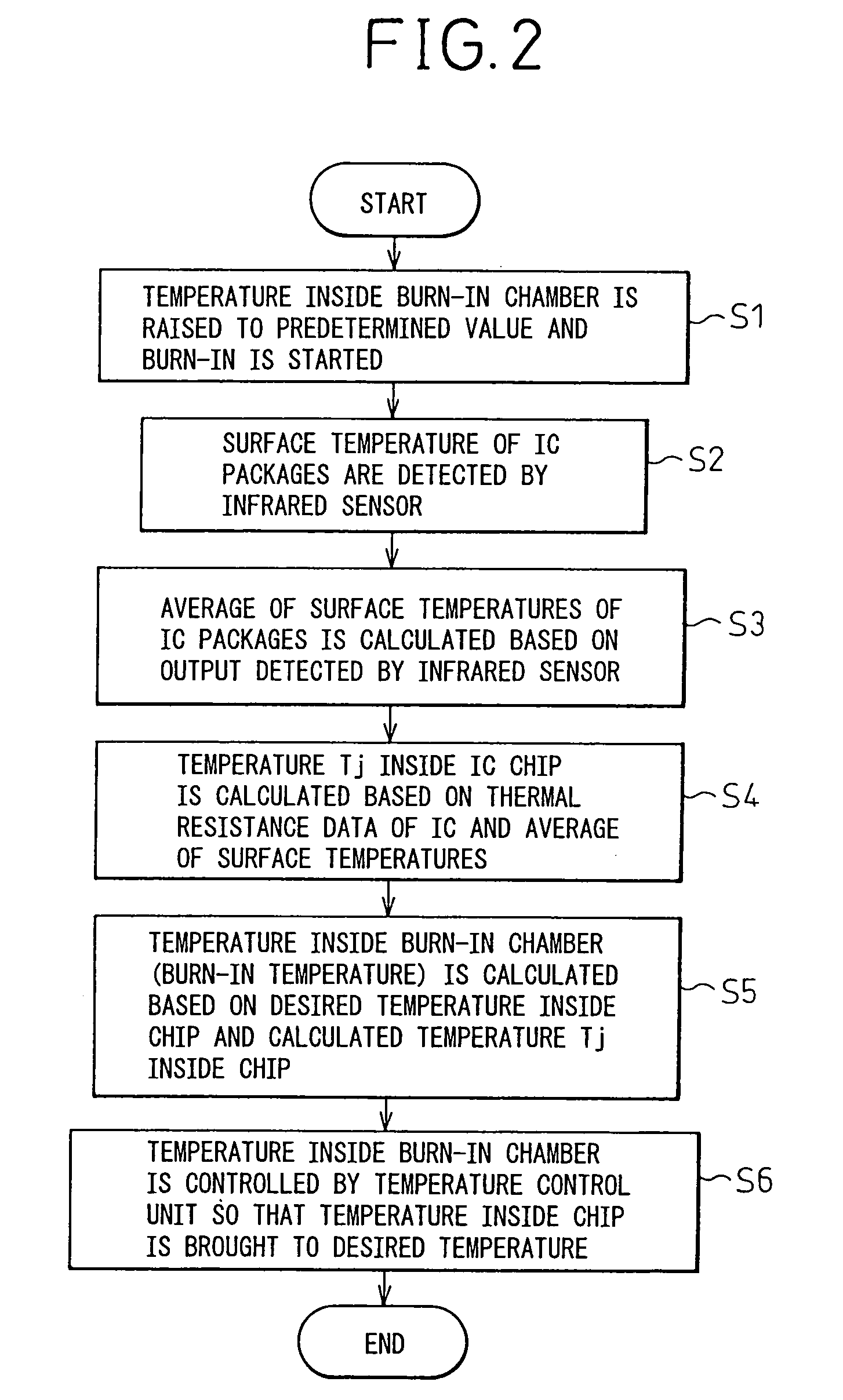Dynamic burn-in equipment
a technology of burn-in acceleration and equipment, which is applied in the direction of individual semiconductor device testing, fault location by increasing destruction at fault, etc., can solve the problems of inability to analyze in detail, burn-in acceleration test is not always conducted at the expected temperature inside the chip, and burn-in acceleration test is not always conducted with a proper burn-in time, etc., to achieve accurate control of the temperature inside the chip
- Summary
- Abstract
- Description
- Claims
- Application Information
AI Technical Summary
Benefits of technology
Problems solved by technology
Method used
Image
Examples
first embodiment
[0051](1) First Embodiment
[0052]Conventionally, as described above, a burn-in acceleration test is not always conducted at an expected temperature Tj inside a chip because of the variations in the quality of ICs. In the present embodiment, therefore, the temperature inside an IC chip is found based on the surface temperature of the IC mounted on a burn-in card accommodated in a burn-in chamber and the temperature inside the burn-in chamber is set to an optimum value.
[0053]FIG. 2 is a flow chart showing a series of processes performed by the control unit 12 in the present embodiment and the present embodiment is explained with reference to FIG. 2.
[0054]A burn-in card on which an IC has been mounted is accommodated in the burn-in chamber 1 as shown in FIG. 1. The control unit 12 raises the temperature inside the burn-in chamber 1 to a predetermined temperature by using the temperature controller 10 and sends out a burn-in start signal to the burn-in control unit 13 (step S1 in FIG. 2)...
second embodiment
[0061](2) Second Embodiment
[0062]As described above, when a life test or the like of semiconductor devices is conducted, the burn-in time is determined based on the acceleration coefficient (product of the temperature inside the chip and the voltage) and the acceleration period given in advance.
[0063]According to the first embodiment described above, as the temperature inside the chip can be brought to a desired value, it is possible to accurately obtain the acceleration coefficient. Therefore, in the second embodiment, the burn-in time is calculated based on the obtained acceleration coefficient as above mentioned and the acceleration period given in advance. The burn-in is conducted with the calculated burn-in time, and the life test of the semiconductor devices are conducted.
[0064]FIG. 3 is a flow chart showing a series of processes performed by the control unit 12 and the second embodiment will be explained with reference to FIG. 3.
[0065]A burn-in card on which an ICs have been ...
third embodiment
[0073](3) Third Embodiment
[0074]In order to conduct a particular analysis or the like of a defective IC, the IC can be examined to specify a defective portion. In the third embodiment, when a defective IC is found during the burn-in acceleration test, it is possible to efficiently carry out the analysis of the defective IC by specifying the defective portion of the defective IC based on the surface temperature distribution of the defective IC.
[0075]FIG. 4 is a flow chart showing a series of processes performed by the control unit 12 in the third embodiment and the embodiment will be explained with reference to FIG. 4.
[0076]As described in the first and second embodiments, a burn-in card on which an IC has been mounted is accommodated in the burn-in chamber 1, a temperature inside the burn-in chamber 1 is raised to a predetermined temperature, a burn-in signal is sent out to each IC 3b mounted on the burn-in card 3 in the burn-in chamber 1 from the characteristic monitoring unit 2, a...
PUM
 Login to View More
Login to View More Abstract
Description
Claims
Application Information
 Login to View More
Login to View More - R&D
- Intellectual Property
- Life Sciences
- Materials
- Tech Scout
- Unparalleled Data Quality
- Higher Quality Content
- 60% Fewer Hallucinations
Browse by: Latest US Patents, China's latest patents, Technical Efficacy Thesaurus, Application Domain, Technology Topic, Popular Technical Reports.
© 2025 PatSnap. All rights reserved.Legal|Privacy policy|Modern Slavery Act Transparency Statement|Sitemap|About US| Contact US: help@patsnap.com



